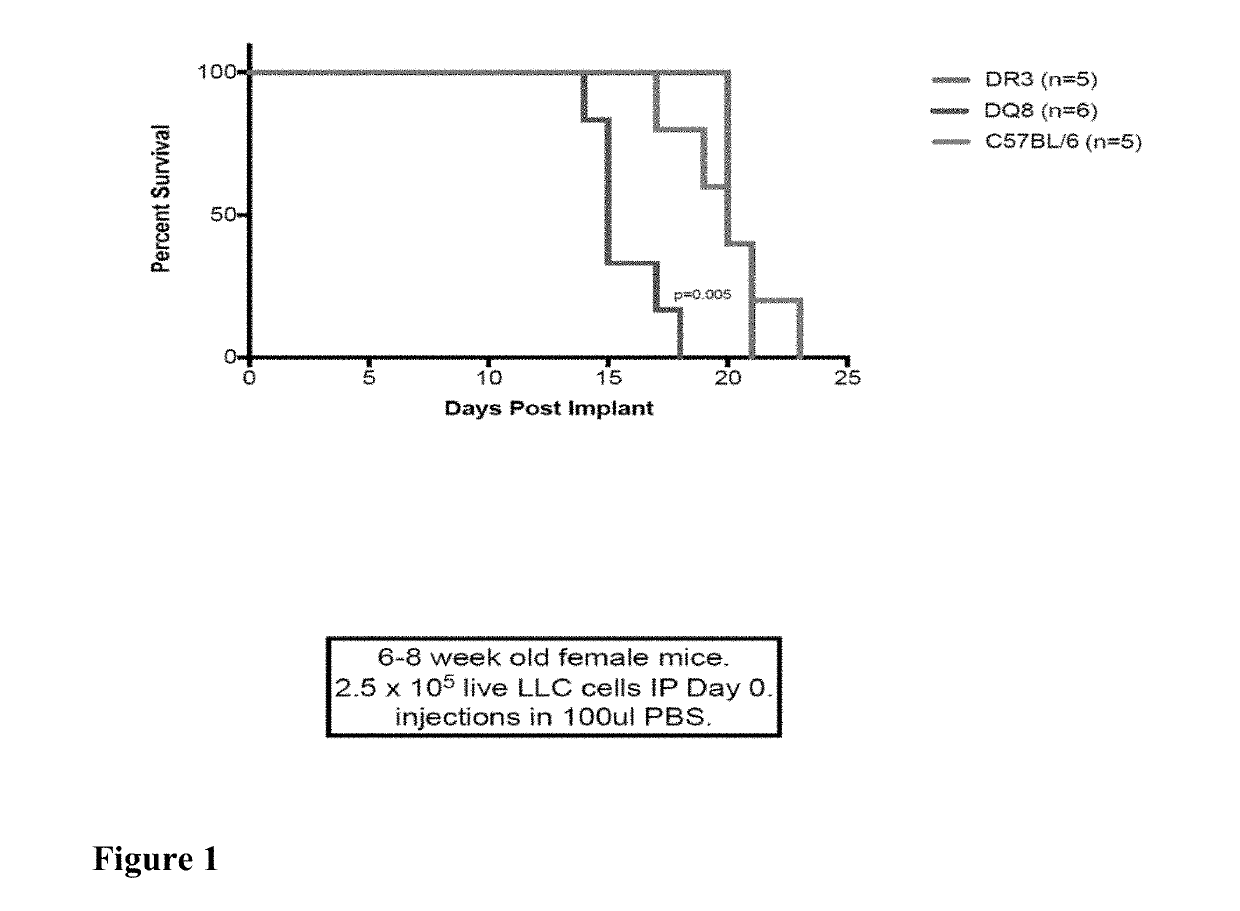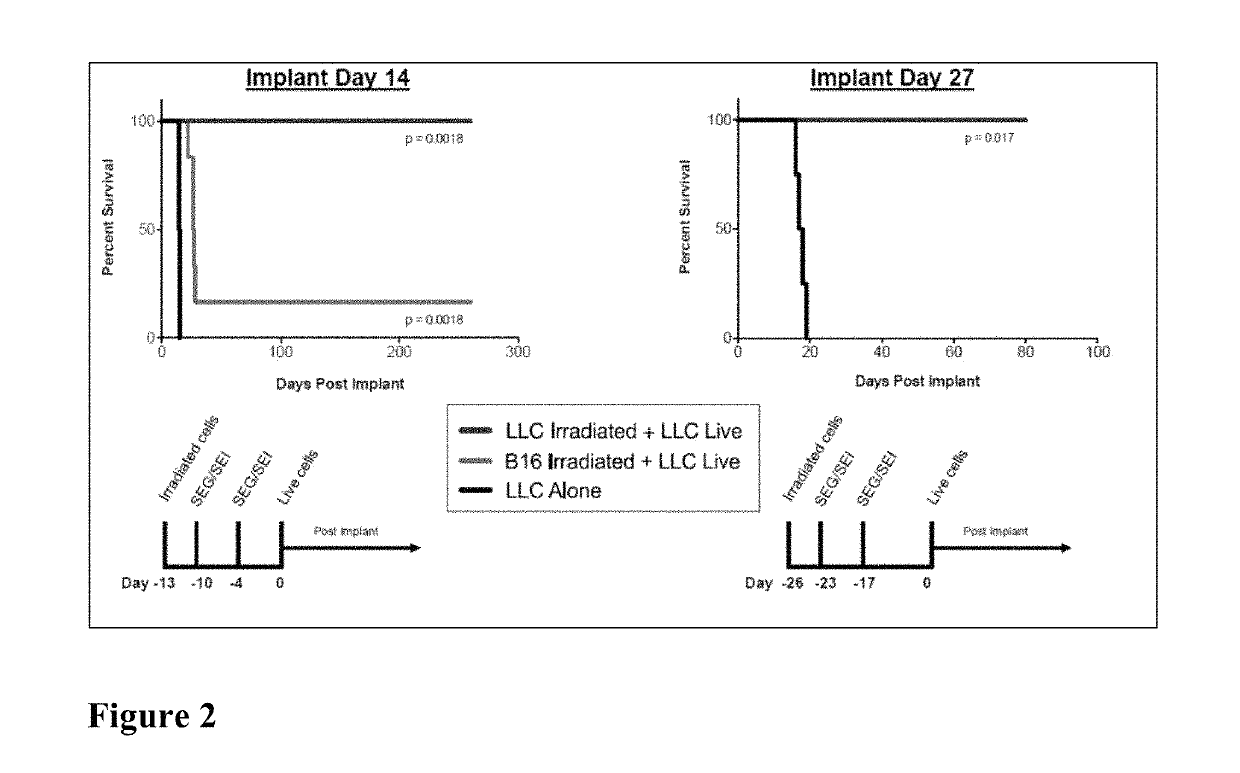Compositions and methods for treatment of cancer
a cancer and composition technology, applied in the field of chemotherapy and cancer, can solve the problems of increased toxicity, inability to achieve the effect of neutralizing antibodies, and failure to improve the effectiveness of chemotherapy agents, so as to overcome toxicities, potent tumoricidal effects, and no significant toxicity
- Summary
- Abstract
- Description
- Claims
- Application Information
AI Technical Summary
Benefits of technology
Problems solved by technology
Method used
Image
Examples
example 1
Clinical Trial of SEG-SEI / DQ8 Conjugates Tethered to Irradiated MHCII− Tumor Cells
[0106]All patients treated have histologically confirmed malignant disease including carcinomas, sarcomas, melanomas, gliomas, neuroblastomas, lymphomas and leukemia and have failed conventional therapy. Patients may be diagnosed as having any stage of metastatic disease involving any organ system. Staging describes both tumor and host, including organ of origin of the tumor, histologic type and histologic grade, extent of tumor size, site of metastases and functional status of the patient. A general classification includes the known ranges of Stage I (localized disease) to Stage 4 (widespread metastases). Patient history is obtained and physical examination performed along with conventional tests of cardiovascular and pulmonary function and appropriate radiologic procedures. They have not been undergoing any other anticancer treatment for at least one month and have a clinical KPS of at least 50. Hist...
example 2
Clinical Trial of SEG-SEI / DQ Tethered to Nanoparticles or Erythrocytes
[0113]All patients treated have histologically confirmed malignant disease including carcinomas, sarcomas, melanomas, gliomas, neuroblastomas, lymphomas and leukemia and have failed conventional therapy. All patients' sera are tested for neutralizing antibodies against individual egc SEs using the inhibition of the T proliferation and primary binding neutralizing antibody assays described herein. In cohort 1, patient sera shows SEG binding levels of 95 ng / ml. Patients diagnosed at any stage of metastatic disease are eligible. Staging describes both tumor and host, including organ of origin of the tumor, histologic type and histologic grade, extent of tumor size, site of metastases and functional status of the patient. A general classification includes the known ranges of Stage I (localized disease) to Stage 4 (widespread metastases). Patient history is obtained and physical examination performed along with convent...
PUM
| Property | Measurement | Unit |
|---|---|---|
| concentration | aaaaa | aaaaa |
| pH | aaaaa | aaaaa |
| pH | aaaaa | aaaaa |
Abstract
Description
Claims
Application Information
 Login to View More
Login to View More - R&D
- Intellectual Property
- Life Sciences
- Materials
- Tech Scout
- Unparalleled Data Quality
- Higher Quality Content
- 60% Fewer Hallucinations
Browse by: Latest US Patents, China's latest patents, Technical Efficacy Thesaurus, Application Domain, Technology Topic, Popular Technical Reports.
© 2025 PatSnap. All rights reserved.Legal|Privacy policy|Modern Slavery Act Transparency Statement|Sitemap|About US| Contact US: help@patsnap.com



